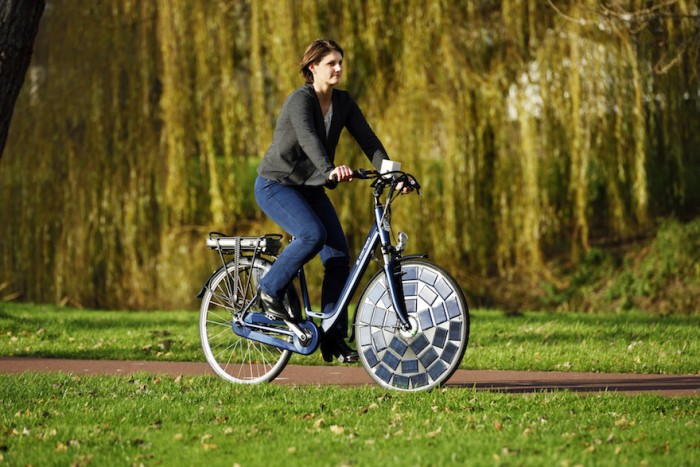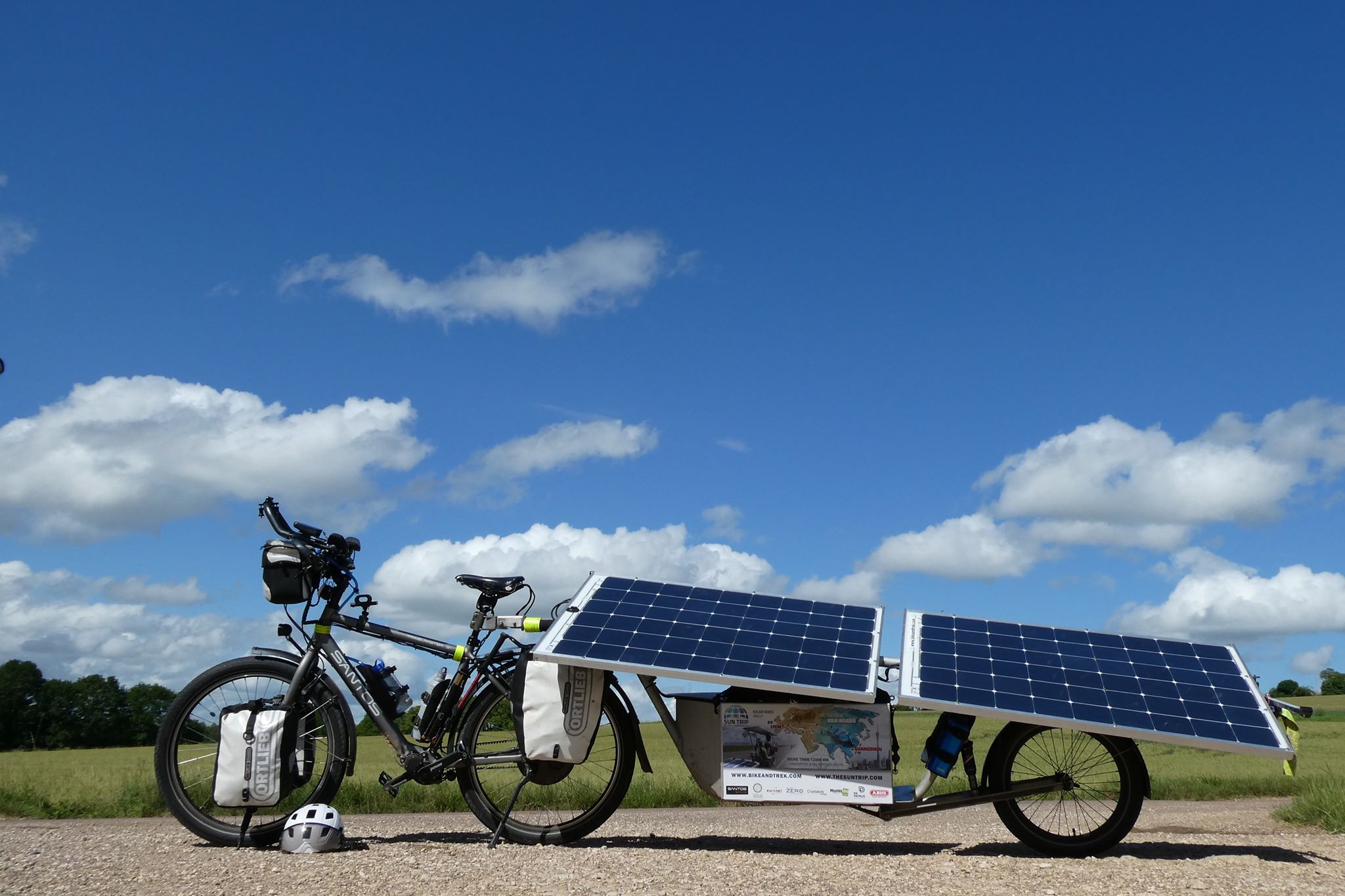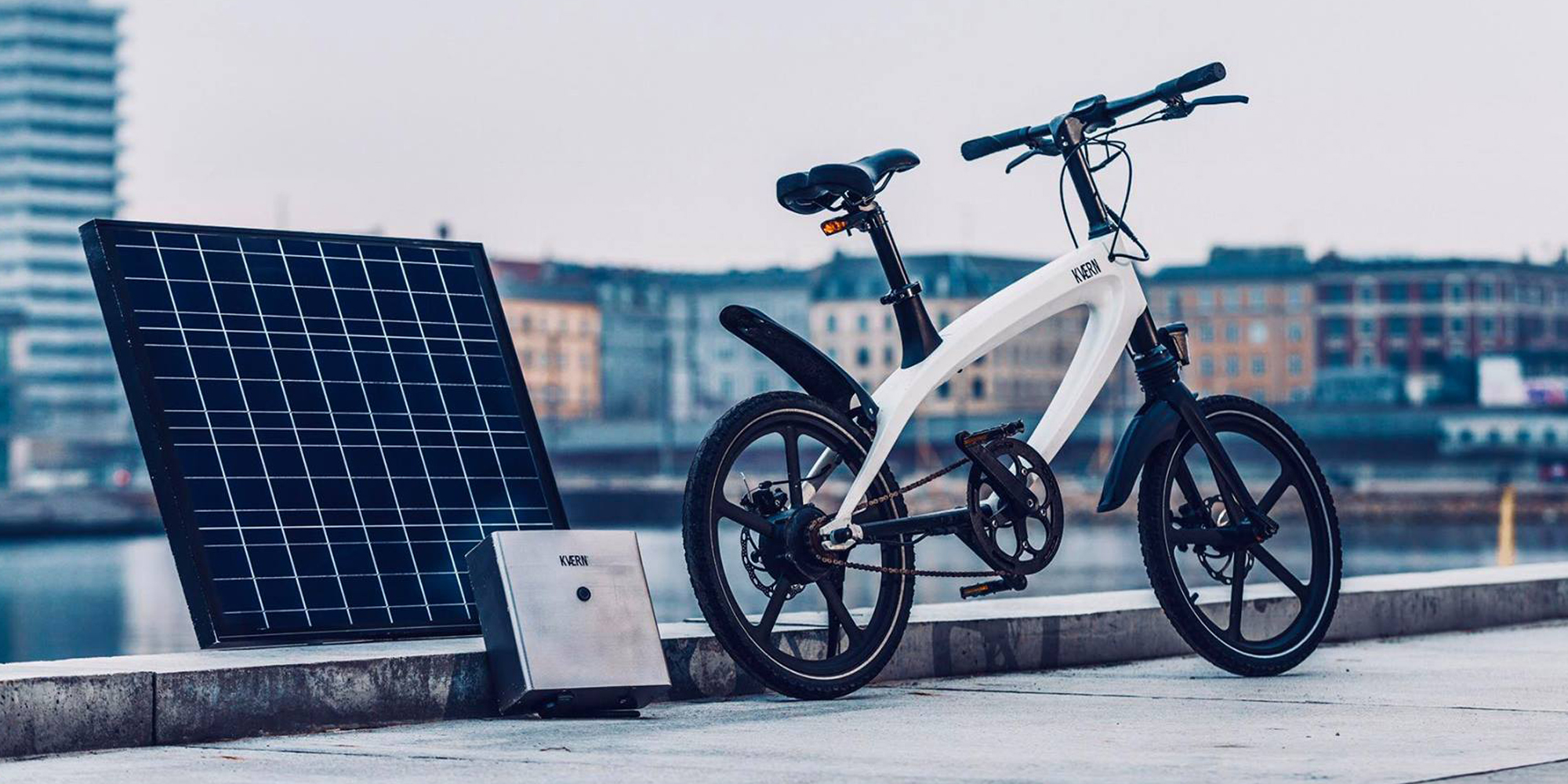Introduction
Solar Bikes Represent A Futuristic Integration Of Renewable Energy And Transportation. By Combining Solar Technology With Cycling, These Innovative Vehicles Offer A Sustainable And Eco-Friendly Mode Of Transportation. In This Comprehensive Guide, We Will Explore The Components, Functionalities, Benefits, And Challenges Associated With Solar Bikes, Shedding Light On How They Are Transforming The Landscape Of Green Commuting.
Solar Bikes Unveiled: An Overview
Solar Bikes, Often Referred To As Solar-Powered Electric Bikes Or Solar E-Bikes, Are Bicycles Equipped With Solar Panels That Convert Sunlight Into Electrical Energy. This Energy Is Stored In Batteries And Powers An Electric Motor, Providing Additional Propulsion To The Traditional Pedaling Mechanism.
Components Of A Solar Bike: The Building Blocks

- Solar Panels: The Defining Feature Of A Solar Bike Is Its Solar Panels. These Panels Are Typically Integrated Into The Bike’s Frame, Handlebars, Or Other Surfaces To Maximize Exposure To Sunlight.
- Battery System: Solar Bikes Are Equipped With Rechargeable Batteries That Store The Energy Generated By The Solar Panels. These Batteries Act As A Power Reservoir For The Electric Motor, Ensuring A Continuous And Efficient Ride.
- Electric Motor: Solar Bikes Come With An Electric Motor That Provides Assistance To The Rider. This Motor Can Be Activated Manually Or Through Sensors That Detect The Cyclist’s Pedaling, Offering A Seamless Integration Of Solar-Assisted And Human-Powered Propulsion.
- Controller Unit: The Controller Unit Manages The Flow Of Energy Between The Solar Panels, Batteries, And Electric Motor. It Ensures Optimal Performance And Efficiency, Regulating Power Distribution As Needed.
How Solar Bikes Work: Unraveling The Mechanism
- Solar Energy Harvesting: Solar Bikes Use Photovoltaic Cells Within The Solar Panels To Capture Sunlight. These Cells Convert Solar Energy Into Electrical Energy Through The Photovoltaic Effect.
- Charging The Battery: The Electrical Energy Generated By The Solar Panels Is Directed To The Rechargeable Battery. The Battery Stores This Energy, Acting As A Reservoir For Powering The Electric Motor During Cycling.
- Electric Motor Assistance: As The Cyclist Pedals, The Electric Motor Is Activated To Provide Additional Assistance. This Assistance Can Be Adjusted Based On The Rider’s Preferences, Allowing For A Customizable And Efficient Riding Experience.
- Regenerative Braking (Optional): Some Advanced Solar Bikes Feature Regenerative Braking Systems. When The Brakes Are Applied, The Electric Motor Acts As A Generator, Converting Kinetic Energy Into Electrical Energy To Recharge The Battery.
Benefits Of Solar Bikes: Riding Towards A Greener Future

- Sustainability: Solar Bikes Offer A Sustainable And Renewable Energy Source, Reducing Reliance On Traditional Electricity Or Fossil Fuels. This Makes Them An Eco-Friendly Transportation Option, Contributing To A Greener Environment.
- Reduced Carbon Footprint: By Harnessing Solar Power, These Bikes Minimize The Carbon Footprint Associated With Conventional Modes Of Transportation. The Clean And Renewable Energy Source Aligns With Global Efforts To Combat Climate Change.
- Cost Savings: Solar Bikes Can Result In Cost Savings Over Time. Riders Can Benefit From Reduced Energy Costs Compared To Traditional Electric Bikes, And The Absence Of Fuel Expenses Makes Them A Financially Efficient Choice For Commuting.
- Health And Exercise: Solar Bikes Encourage Physical Activity As Riders Pedal Alongside The Electric Motor Assistance. This Dual-Mode Of Propulsion Promotes An Active Lifestyle, Contributing To Improved Health And Fitness.
Challenges And Considerations: Navigating The Path Of Solar Biking
- Limited Range In Low Sunlight: Solar Bikes May Experience Limitations In Low Sunlight Conditions. Reduced Exposure To Sunlight Can Affect The Charging Capacity Of The Solar Panels, Potentially Limiting The Bike’s Range.
- Initial Cost: The Upfront Cost Of Solar Bikes, Including The Integration Of Solar Panels And Related Technologies, Can Be Higher Compared To Traditional Bicycles. However, The Long-Term Savings In Energy Costs May Offset The Initial Investment.
- Weight Considerations: The Addition Of Solar Panels And Associated Components May Increase The Overall Weight Of The Bike. While Advancements In Materials Aim To Minimize This Impact, Weight Considerations Are Essential For Optimal Performance.
- Charging Time: Solar Bikes May Require Extended Periods Of Exposure To Sunlight For Effective Charging. Understanding The Charging Time And Planning Rides Accordingly Is Crucial For Users To Maximize The Benefits Of Solar Energy.
Types Of Solar Bikes: Exploring Varieties

- Solar E-Bikes: Standard Bicycles Retrofitted With Solar Panels And Electric Motors Fall Into The Category Of Solar E-Bikes. These Bikes Provide An Electric Boost To Traditional Pedaling, Making Them Suitable For Various Terrains.
- Foldable Solar Bikes: Some Solar Bikes Are Designed To Be Foldable, Offering Convenience For Urban Commuting And Storage. The Foldable Design, Coupled With Solar Technology, Provides A Versatile And Portable Transportation Solution.
- Solar Cargo Bikes: Solar Cargo Bikes Are Equipped With Additional Cargo Space, Making Them Suitable For Transporting Goods Or Groceries. The Combination Of Solar Assistance And Cargo Capacity Enhances Their Utility For Various Purposes.
- Solar Bike-Sharing Programs: Solar Technology Is Also Being Incorporated Into Bike-Sharing Programs. Solar Bike-Sharing Stations Use Renewable Energy To Power The Bikes, Contributing To Sustainable And Accessible Urban Transportation Solutions.
Maintenance And Care: Keeping Your Solar Bike In Peak Condition
- Regular Cleaning: Keeping The Solar Panels Clean Is Essential For Optimal Energy Harvesting. Regularly Clean The Panels To Remove Dust, Dirt, Or Any Obstructions That May Hinder Sunlight Absorption.
- Battery Maintenance: Monitor The Condition Of The Bike’s Rechargeable Battery. Ensure That It Is Charged Regularly And Follow Manufacturer Recommendations For Battery Maintenance To Prolong Its Lifespan.
- Check For Wear And Tear: Like Traditional Bicycles, Solar Bikes May Experience Wear And Tear. Regularly Inspect Components Such As Tires, Brakes, And The Electric Motor To Address Any Issues Promptly.
- Protecting Solar Panels: Ensure That The Solar Panels Are Well-Protected From Physical Damage. Proper Storage And Handling Can Prevent Scratches Or Cracks That May Impact The Efficiency Of The Solar Panels.
The Future Of Solar Bikes: Advancements And Innovations

- Improved Solar Panel Efficiency: Ongoing Advancements In Solar Technology Aim To Enhance The Efficiency Of Solar Panels. Higher Efficiency Means Improved Energy Harvesting, Addressing Some Of The Limitations Associated With Solar Bikes.
- Integration Of AI And Smart Features: The Future May See The Integration Of Artificial Intelligence (AI) And Smart Features In Solar Bikes. This Could Include Adaptive Energy Management Systems, Route Optimization Based On Sunlight Availability, And Connectivity With Smart Devices.
- Lightweight Materials: Innovations In Materials Are Expected To Contribute To The Development Of Lighter Solar Bikes. Lightweight Materials Can Offset The Impact Of Added Components, Improving Overall Performance And Efficiency.
- Expanded Infrastructure: As The Popularity Of Solar Bikes Grows, There Could Be An Expansion Of Solar Charging Infrastructure. Solar Bike Stations And Charging Points May Become More Prevalent, Supporting The Widespread Adoption Of Solar-Powered Commuting.
Conclusion: Riding Into A Sustainable Tomorrow With Solar Bikes
Solar Bikes Represent A Harmonious Blend Of Renewable Energy And Sustainable Transportation. As Technology Continues To Evolve, These Eco-Friendly Vehicles Offer A Glimpse Into A Future Where Clean Energy Powers Our Everyday Commute. By Understanding The Components, Benefits, Challenges, And Future Potential Of Solar Bikes, Enthusiasts And Eco-Conscious Commuters Alike Can Embark On A Journey Towards A Greener And More Sustainable Mode Of Transportation.
